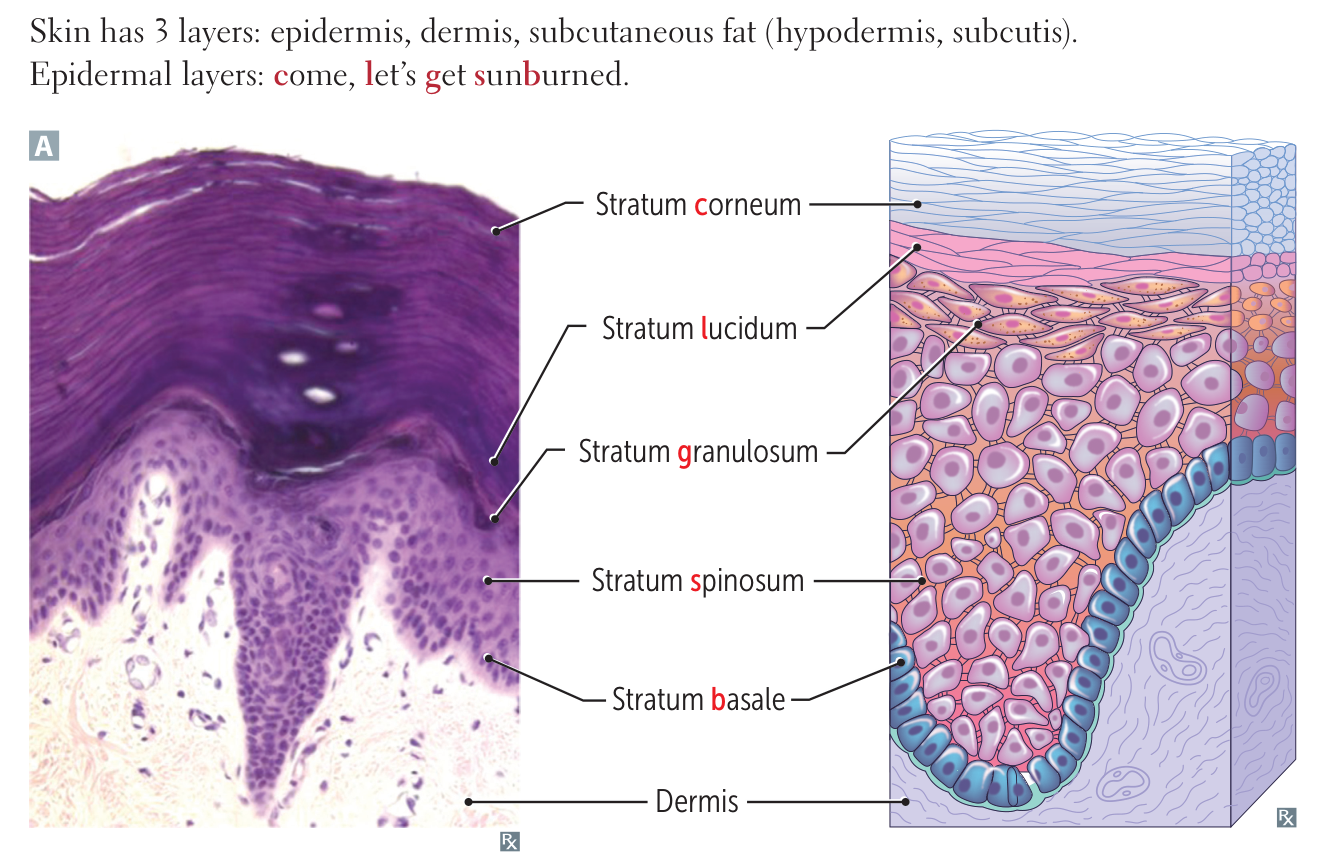
- Stratum corneum: outer layer of the epidermis
- Consists of dead (anuclear), keratin-filled cells
- This layer is constantly being sloughed off.
- Stratum lucidum: thin, translucent layer
- Located only on thick skin (palms and soles)
- Composed of a homogeneous layer of keratinocytes with no nuclei or organelles
- Stratum granulosum: also called the granular layer
- Contains keratohyalin
- This layer has waterproof properties.
- Stratum spinosum
- Composed of actively dividing keratinocytes with spinous-like projections (prickle cells)
- This layer produces keratin and induces keratinization.
- Langerhans cells are also located in this layer.
- If undergoes malignant changes, will lead to cSCC
- Stratum basale (also called the basal cell layer of the epidermis)
- Stem cells of the epidermis (their daughter cells migrate upwards and differentiate into other cells)
- Melanocytes and Merkel cells are also located in this layer.
- The stratum basale is regenerative (basal keratinocytes proliferate to fill skin defects).
Dermatopathology
